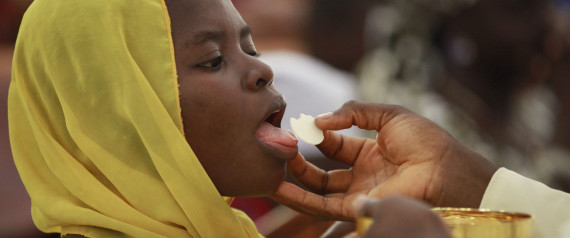Jesus offers the Samaritan woman the opportunity to partake of living water as part of the conversion and restoration process. In a similar manner, all Catholic believers can identify with the Woman at the Well as a co-companion in the journey from sin to new life in Baptism. We believers share the same wounded human condition as the Samaritan woman and it is Jesus’ ultimate wounding at Calvary that heals us with living water.
Jesus is the wounded healer offering redemption and healing to the woman at the well and to us. During this pivotal period in the history of the Catholic Church, the age of healing has a new meaning as Benedict XVI promotes harmony and therapeutic spiritual healing between all brothers and sisters of humanity.
Jesus offers the portrait of healer for all of us to emulate in our lives. His ability to engage the Samaritan woman without prejudice and judgment is a great moment of cathartic revelation that reminds all of us of the,”sacred call “to conversion is the touchstone for all religious and human actions.
The woman at the well is a great example of the duality of ministry the Church offers to those already incorporated through Baptism, and those outside the Church that seek a graced harmonious relationship in global society. What I always find significant about the Samaritan woman is her distinction as a Samaritan. Jesus could just have easily offered his advice and counsel to a Jewish woman.
However, he engages a member of the separated Tribes of Israel the opportunity to confess, convert and be healed through the element of water. On a uniquely modern basis, our Church today is presented with worldwide opportunities to bridge misunderstandings of theology and history between all faiths. Religious dialogue directed towards universal harmony is a responsibility of all Catholic peoples while respecting other religions freedom of beliefs and autonomy.
In the story of the Woman at the Well, Jesus makes a simple request of water from the woman. He does not politicize, or theologically dissect her marital, religious or political situation. Rather he asks for life sustaining water, universally needed by all living things for life. However, there is a ironic duality going on here as well…Jesus is asking for water and is giving the opportunity for eternal water to the Samaritan woman. Perhaps as a Catholic community of believers, we need to contemplate this mystery.
We are not only the recipients of salvation but are also the dispensers of salvation through faith and Baptism. Catholic communion has a dual responsibility to both nourish and share spiritual nourishment with the larger global society without conditions, just Gospel love of God and neighbor.
Jesus interaction with the woman at the well is not only an opportunity for Jesus to be the Physician-Healer but also the Divine Therapist through the diagnostic questioning of the woman’s marital situation. While from an exegetical perspective the “life giving water” is clearly a sign of Baptism, it is also a deeply rooted suggestion of therapeutic healing through grace.
As participants in “wounding” and being “wounded” Catholic believers metaphysically call all peoples to a live filled and marked by radical transformations. As Catholics, we offer to the entire world the opportunity to participate in the Paschal Mystery and partake of Living Waters. This call to global fellowship is the cornerstone of potential human understanding of the universal mysteries of faith and our ultimate desire for global unity and harmony.
The pursuit of Living waters is healing, therapeutic, and unifying. As Catholic global believers, we offer all peoples the message of love and unification through Christ Jesus. A prayer from the Liturgy of the Hours perhaps best concludes this reflection:
Father, form in us the likeness of Christ your Son and strengthen His love within us. Touch the hearts of all with your love. Send us as witnesses of Gospel joy to a world of fragile peace and broken promises. Touch the hearts of all with your love, so we may love one another.



1 comment:
Praise the lord
Post a Comment